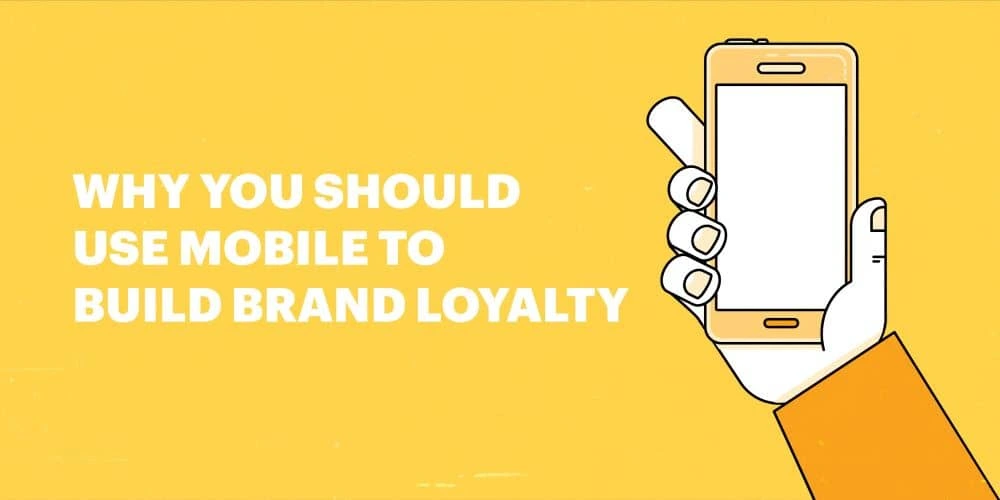First it was smartphones, quickly followed by tablets and now smartwatches. The move towards mobile devices is quickening, and marketers are following suit. In 2016, they spent $101 billion on mobile internet ads worldwide, $40 billion in the U.S. alone. From 2013 to 2019, there will be an estimated tenfold increase in mobile advertising spending.
Related: 10 digital trends that are transforming marketing in 2018
So how can your brand benefit from mobile spending? And how can you make sure that your mobile customers keep coming back?
Here are some ways marketers are using mobile to increase brand loyalty and cash in on mobile success.
Mobile pay creates loyal customers
No, mobile pay is not the leading form of payment. Not yet. But things are heading in that direction. In 2014, mobile pay accounted for $4 billion of in-store purchases. By 2019, it’s expected to increase to $34 billion. Though still lagging way behind plastic with only 13% of smartphone owners having used it to make a purchase, that number will rise. Especially since marketers for companies such as Android and Samsung are starting to offer incentives like loyalty cards for customers who use their mobile pay platforms.
Retailers like Starbucks and Dunkin’ Donuts offer mobile pay through their apps and reward customers who use it. The Starbucks mobile pay program via its app has been so successful that over 21% of all U.S. Starbucks store purchases come from it. There’s an expectation that in a few short years, the app payments will account for 50% of business.
Richard Crone, CEO of mobile-strategy company Crone Consulting LLC said the Starbucks mobile pay app was “the most successful launch of a new payment type in history.” Marketers, take note.
You can improve customer targeting with mobile ads
Mobile is on the cutting edge of marketing technology. Where else can you seamlessly integrate geofencing, purchase preferences and history, and social media interaction with your brand? Mobile lets you isolate essential customer information to offer the most personalized and targeted marketing in history.
Mark Ghermezian of Appboy says about the future of mobile marketing:
“Brands must understand how to strategically connect with customers on a personal basis and encourage engagement, based on customer behavior, to transform them into long-lasting users. Mobile marketing automation will allow companies to collect and use data in a more actionable way and deliver personalized and timely messages to their customers.”
Companies who effectively harness mobile tools create stronger relationships with their customers by anticipating their needs, stimulating their desires, and rewarding them with exclusive offers and promotions.
Customers like to shop on mobile devices
Consumers interact with brands through their smartphones in a number of ways. They look up brick-and-mortar store locations, search for coupons and make purchases. Anna Bager, senior vice president of mobile and video at the IAB (Interactive Advertising Bureau) says:
“Pressing the ‘buy’ button on mobile devices is now a regular occurrence the world over. […] Marketers and media agencies need to fully embrace smartphones and tablets as a critical pathway for all shopping activities and increase investment if they want to build meaningful relationships with mobile consumers, driving them from discovery to purchase.”
The fact is that customers like to shop on their mobiles. In a study involving mobile users in 19 different countries, 80% said they had a positive experience with mobile shopping. Also, consumers engage more proactively with mobile apps than with traditional forms of advertising. The ability to take advantage of deals and shop at their own convenience are key factors in mobile shopping’s popularity.
Mobile apps increase your brand frequency
Mobile apps not only incorporate all of the above principals, but they also effectively increase a customer’s exposure to your brand. Americans spend on average 4.7 hours a day looking at their smartphones. Factoring in sleep, that means that people are spending about a third of their day on mobile. If your brand is on their device, they’re being exposed to it constantly.
The marketing term “effective frequency” suggests that the more frequently a consumer is exposed to your brand, the higher their intent to purchase becomes. When you adopt a mobile marketing strategy, you’re exponentially increasing your brand’s visibility.
Dick Stroud, Managing Director at 20plus30 said it best when he remarked, “At the birth of the web, companies aimed to get their website bookmarked. Marketers should be in a race to get their apps on the home screen of consumers’ smart devices.”
Ignoring mobile is a big risk.
As the trend towards personalization and targeting through mobile increases, customers are changing their expectations of interactions with brands. 54% of consumers say that a poor mobile app experience would make it less likely for them to patronize that business again, and 27% of consumers say that it would give them a negative view of the brand’s products.
Marketers ignore the mobile trend at their peril. It was estimated that the UK retail industry loses a potential 6.6 billion GBP due to lack of investment in mobile. Jamie Turner of 60SecondMarketer warns: “If you’re not using mobile marketing to attract new customers to your business, don’t worry—your competitors are already using it and are getting those customers instead.”
An investment in mobile marketing is an investment in brand loyalty. Even fringe technologies like mobile pay are on the rise and some early adopters have already seen great success in using it to increase customer loyalty. Your mobile presence has a great deal to do with consumer perception of your brand. Bottom line: use mobile or lose customers.



